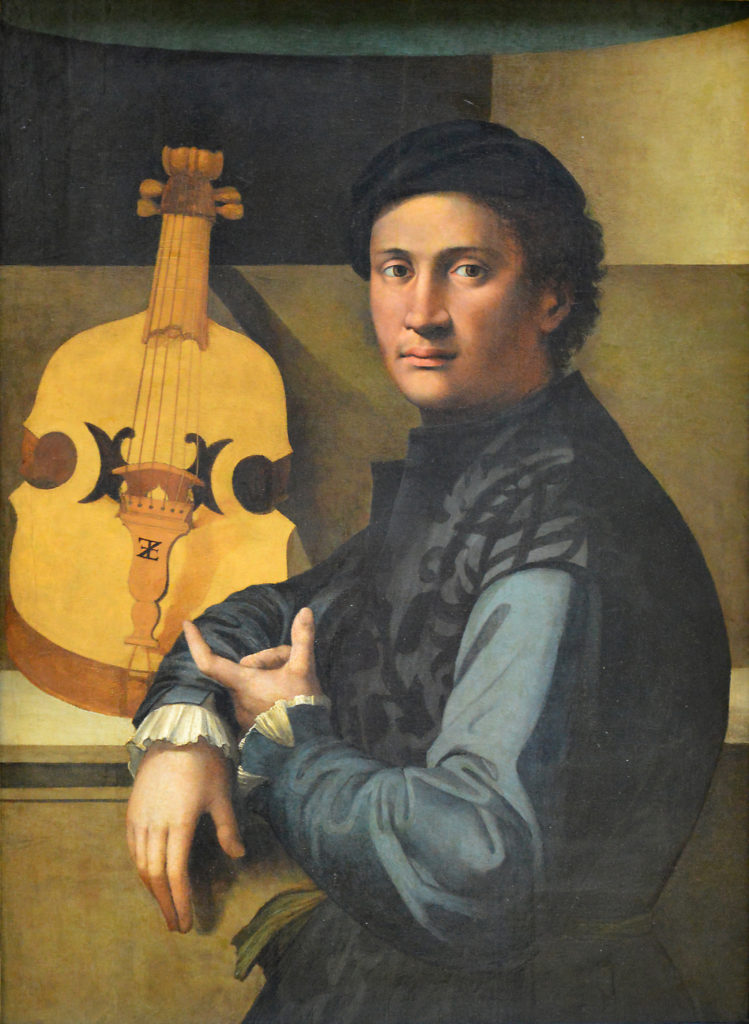
Portrait of a viola player, by Hezekiah of Vezzano, 16th century, Louvre Museum.
We are available to the recognition of any rights not expressed herein.
Early Music Seminars 2022 | Viola bastarda
Egida Sartori and Laura Alvini Early Music Seminars
Director: Pedro Memelsdorff
Viola bastarda
and the art of Italian diminuition
1580-1630
Master classes by Paolo Pandolfo
Venice, Fondazione Giorgio Cini, 2–6 November 2022
Deadline for applications: September 5, 2022
Download the call for scholarship
In Italian treatises or music collections of the late 16th and early 17th century, the term alla bastarda generally refers to a particular technique of ornamenting (or diminishing) vocal compositions with rapid virtuosic passages over a large range, performed on instruments such as the organ, harp, lute or viola. Viola bastarda, on the other hand, denoted – or appears to have denoted – a type of viola da gamba particularly well-suited, by tuning or constitution, to the performance of these diminutions.
Considering the importance attached to this technique by numerous historic composers – such as Girolamo Dalla Casa, Giovanni Bassano, Riccardo and Francesco Rognoni, Orazio and Francesco Maria Bassani and Vincenzo Bonizzi –both the relative scarcity of surviving compositions and the rarity of modern historiographic writings on the subject are surprising.
The principal teacher at the seminar will be Paolo Pandolfo, a renowned viola da gamba specialist and teacher at the Schola Cantorum, Basel. He will conduct a group of four viol players, accompanied by chitarrone, organ and harpsichord, all selected through an international call for scholarship applications. There will also be a public concert (free admission but booking required) at the Squero Auditorium on Saturday, 5 November.
